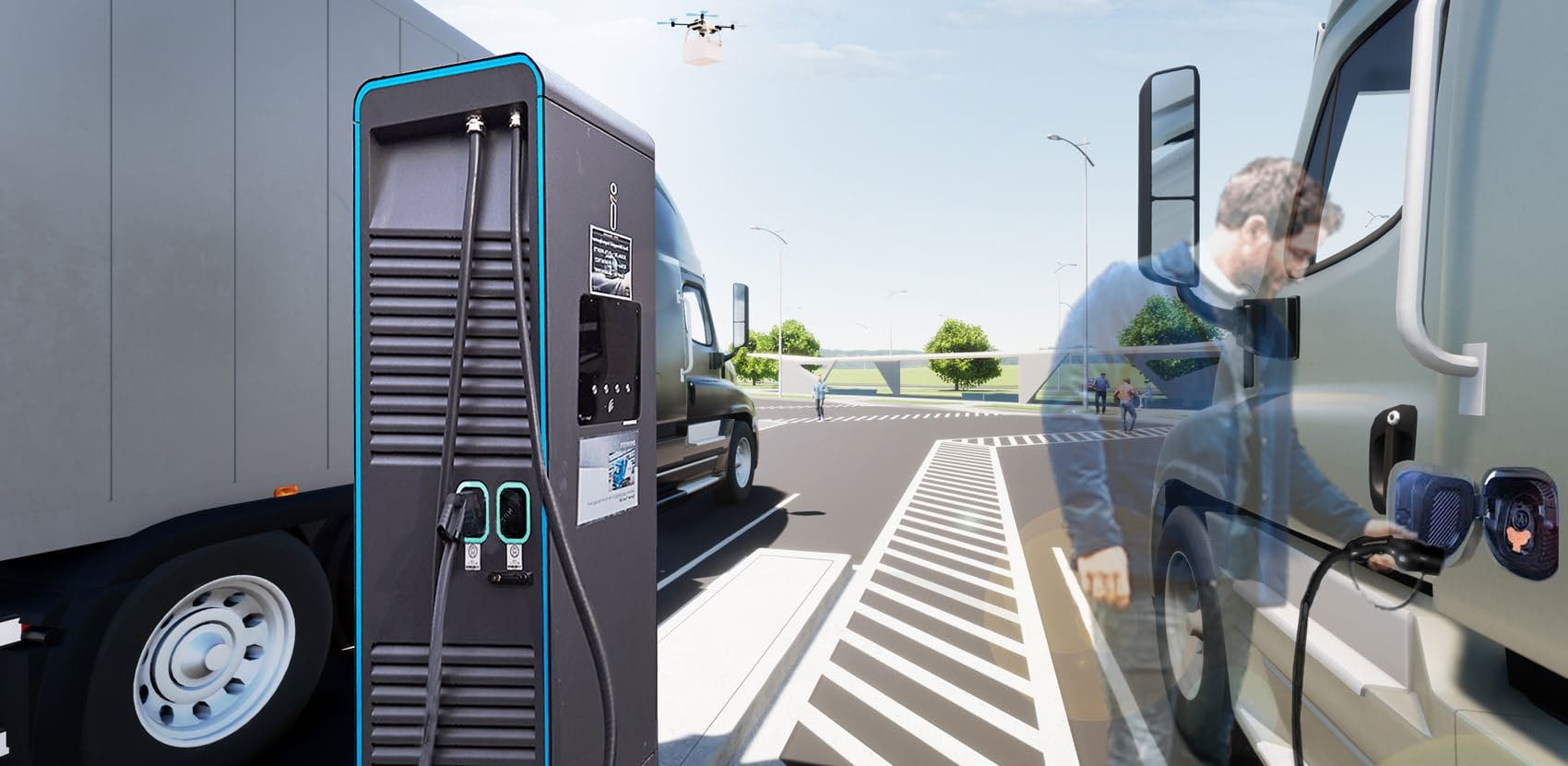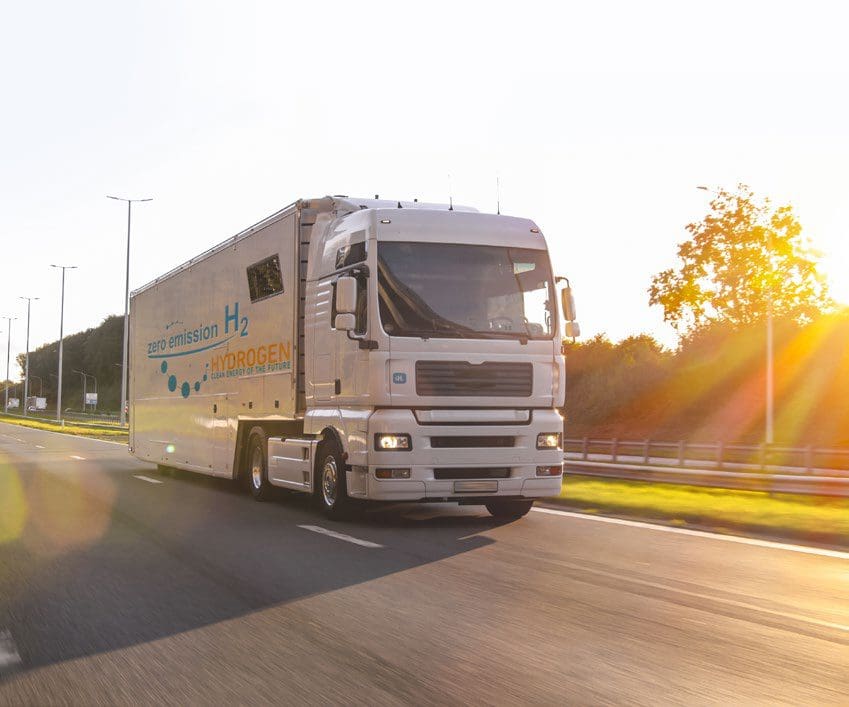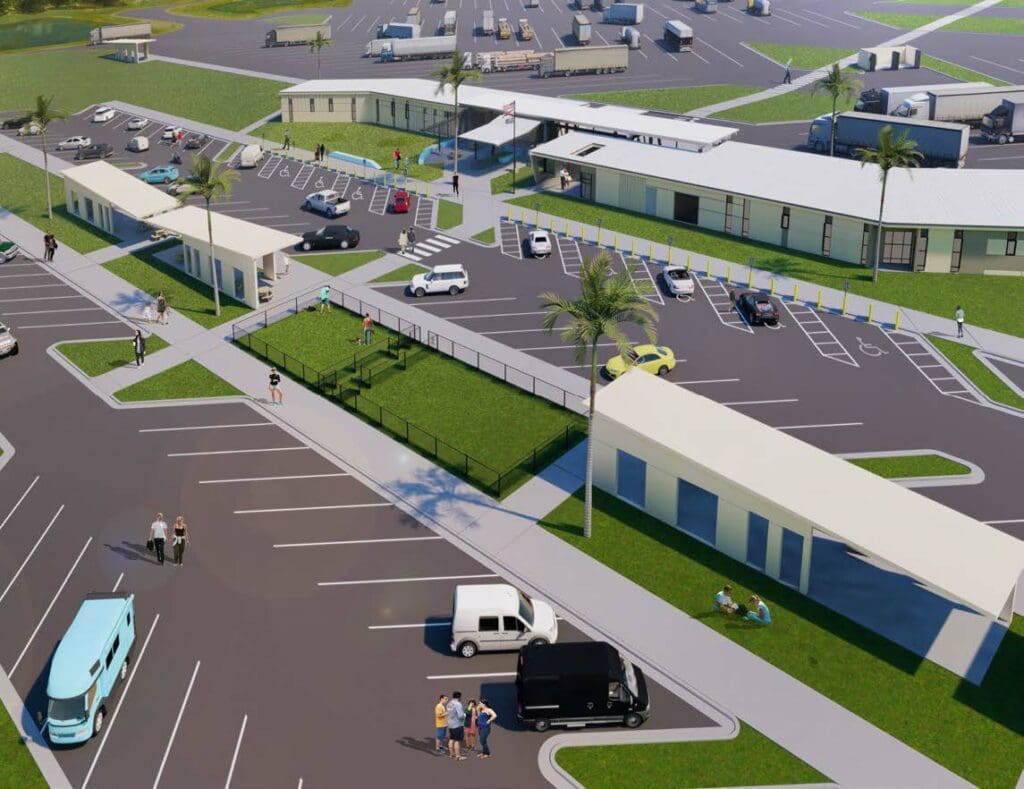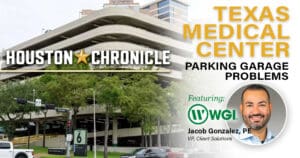
WGI Unleashed Episode 89: Lyndsey Duty, Environmental Scientist
On the latest episode of the WGI Unleashed podcast, we sit down with Lyndsey Duty, one of WGI’s Environmental Scientists based out of our Tampa, FL office!
Learn from award-winning professionals — explore our whitepapers, blogs, and the latest industry updates.
Join our dynamic organization of engineers, land surveyors, landscape architects, environmental scientists, and architects!
Talk to a market leader today! We’ll answer any questions you have about our professional services.

Download this publication as a PDF
WGI is Creating the Future of Transportation Parking and Places.
Rest areas are a vital element of America’s highway landscape — first mandated as part of the Interstate Highway System in the 1950s. They were originally meant to be roadside parks where tired or bored drivers could take a quick break before continuing their trips. But it wasn’t long before they began to take on personalities of their own, becoming unique and often colorful reflections of the areas where they are located. Their architecture often included nods to local history or hometown heroes, and they are frequently built with local materials and embellished with native vegetation.
Over the decades, thousands of public rest areas and private service areas were built along those highways developed across the United States. There are currently nearly 2,000 rest areas along local and interstate routes, with new ones developed every day by state and federal agencies, and private entities.
These facilities typically can be divided into two categories. Traditional public rest areas generally provide parking areas for cars, RVs, and large trucks based on future traffic demand calculations. They tend to have minimal amenities regulated by longstanding rest area commercialization laws, including restrooms, vending machines, security stations, dog parks, and centralized kiosks offering basic travel information. The second type of facility, or private service area, frequently offers additional amenities, including restaurants, fueling, electric vehicle charging, and convenience stores, in addition to restrooms.
As important as rest areas are—and have been over the years—for highway travelers, they can and should be much more. WGI is re-envisioning the future of these “places,” making them more user-friendly, sustainable, technology-driven, and economically vital. We are also working with both public authorities and private developers to make that vision a reality.
A VISION FOR THE FUTURE
WGI is creating safe, accessible rest areas inviting for all motorists, from truck drivers to local commuters, and families with pets.
Each rest area must be unique, meeting the particular needs of those motorists using the roads where they are located. Yet, there are basic elements that should feature in every rest area — making them safe to use, universally inviting, accessible, and maintenance-friendly.
In fact, safety is a primary consideration in rest area design, and the best designs implement strategies recommended by Crime Prevention Through Environmental Design (CTPED), a multi-disciplinary approach leveraged through urban, architectural, and environmental disciplines. Sustainability is also a key consideration, and programs like the United States Green Building Council (USGBC) LEED Certification, the International WELL Building Institute Certification, and the Green Building Initiative’s Green Globe Certification can offer guidance.

Rest areas are often funded, or at least partially funded, by the federal government. One of the primary requirements of their federal funding is low maintenance. As stewards of the funding process, we carefully select construction materials and finishes to promote long-term durability and minimize funding allocated to facility upkeep. The materials chosen should be resilient and sustainable in nature, and must also be implemented through thoughtful design and assure end-user comfort and safety.
Also, vital may be developing facilities that don’t require connections to local infrastructure. For instance, through innovative design, rest area developments could be developed to provide their own water resource by capturing and reusing rain. The rainwater can then be treated on-site — utilized for both patrons’ personal use and to clean and maintain the rest area. This approach promotes sustainability, potentially reduces operational costs by avoiding costly reliance on public utilities, and facilitates on-site management of the necessary utility.
Likewise, including renewable-energy production in the design can promote sustainability, while making the rest area self-sufficient. Facilities can be powered by wind, solar panels, fuel-cell technology, or a combination of multiple renewable energy forms. Different areas of the country lend themselves to different approaches. A development in Arizona or rural Texas may lend itself to solar power, whereas a project in the northeast might utilize hydrogen fuel-cell technology. The electricity that’s produced can also be used for EV Charging which, in addition to being an important user amenity, can be a revenue source.
An efficient energy production strategy can also benefit the community where the development is located. Rest areas that produce more energy than required to operate can return excess power to the local grid, helping reduce local power costs. In return, the local community might provide tax or other considerations to the rest area.
Of course, sustainability doesn’t just revolve around energy production and staying off the public grid. The site choice itself can also be environmentally friendly. Important types of green development include repurposing existing rest area sites or building on brownfields that may not otherwise be easily utilized.
Ultimately, the choice of how to handle power, water, and other resources should be based on owners’ individual needs. Public agencies that own or operate rest areas don’t worry about connecting to local infrastructure since they likely operate that infrastructure—or are at least partners with another local agency that does. Therefore, the cost of that power or water isn’t a significant issue. However, the agency may still choose to promote sustainability by including renewable energy or water management in its design.
Private owners, on the other hand, do need to be concerned about power and water costs. By implementing renewable energy and sustainable water strategies, they may significantly reduce their operational costs while reducing their reliance on local resources. They may even be able to generate revenue by selling electricity to EV users or back to the public grid.
SERVICES AND AMENITIES
Rest areas can serve many roles by providing a break for weary drivers, a place to refuel for drivers traveling long distances, facilities for bathroom breaks, or food services for hungry travelers. For owners, they can also be an excellent source of revenue. The better the experience you provide travelers, the more revenue your rest area will generate.
But they can’t serve their purposes if they don’t entice people to stop.
One of the keys to encouraging people to stop is providing services that drivers and families value. Traditionally, services were treated as an afterthought. How often did you stop at a rest area with unmaintained restrooms that weren’t fully operational? Or uninspiring choices for buying food or basic goods? Chances are that your unsatisfactory experience was simply the norm.
However, that’s changing. Transportation planners, Departments of Transportation, and private owners realize that the most effective way to encourage people to stop is by offering appealing rest areas that are safe and well-lit, easy to get in and out of, offer amenities for pet owners, and a range of services designed to appeal to different types of travelers. In essence, you want to create an attractive mini-destination for people to visit during their trip. A well-designed rest area is both a place for people to stop — and a place where owners can generate revenue.
Technology is a central part of everyone’s day-to-day life and another amenity that can set a rest area apart. Parking availability systems, adaptive on-site Wi-Fi, electrification for vehicles and devices, and other technological advantages allow future rest areas to serve as technology hubs. They will permit patrons to connect while they are taking a break from driving. By installing 5G technology and fiber-optic infrastructure, owners can offer patrons high-speed connectivity to work and play, and reliable cell service. These popular amenities can help influence drivers’ decisions about where to stop to take a break.
When designing a new rest area, it’s crucial to plan for the introduction of new technologies in the future, especially for mobility. For instance, planning now for accommodating self-driving vehicles, since their introduction is well underway. Remember, you are building a facility that should operate for decades to come. It’s important to anticipate how new technologies will impact rest areas and prepare to accommodate those new technologies.
INTEGRATED FUNCTIONS
For many owners, revenue generation is an important factor when developing a new rest area. It’s essential not to focus solely on traditional revenue sources like refueling, food services, and retail stores. For many owners, there are additional prospective revenue streams.

One possible lucrative option is eCommerce. Because of their location along travel corridors, rest areas can serve as the perfect staging areas for eCommerce, allowing large distribution companies to lease parking lots for staging during high-volume periods like the holidays. The potential can’t be overstated. In the United States, eCommerce is a $600 billion industry and growing larger each year, and our highways are the distribution conduits.
Since eCommerce activity may be seasonal, it’s important that the rest area’s design is adaptable to accommodate these additional services when necessary. WGI’s experts can help you assess whether eCommerce staging should be part of your business plan and, if so, create a design that can accommodate such flexibility without impacting the rest area’s primary operations.
BUILDING TOMORROW’S TRAVELING CONVENIENCE TODAY
Rest areas play an important role in promoting travel safety and providing a convenient amenity for drivers. They can also be lucrative sources of revenue for private owners. But traditional rest-area designs are no longer sufficient. Government agencies and private owners who are developing rest areas today need to build facilities that are well-designed, safe, inviting, sustainable, technology-driven, and adaptable for future needs.

WGI is a national design and professional services firm leading in technology-based solutions for the construction of public infrastructure and real estate development. At WGI, we’re providing Tomorrow’s Infrastructure Solutions Today.

On the latest episode of the WGI Unleashed podcast, we sit down with Lyndsey Duty, one of WGI’s Environmental Scientists based out of our Tampa, FL office!

WGI’s San Antonio team laced up their running shoes and braved the rain to take on the iconic Rock and Roll 5K – Discover how they turned challenges into triumphs in this memorable event recap!

With a legacy of supporting, empowering, & inspiring women in transportation, the WTS Central Florida’s Annual Awards & Scholarship Banquet was nothing short of a night to remember.

Discover how Austin is transforming urban development with proposed zoning changes, inclusive housing initiatives, and creative space preservation—all while embracing growth and sustainability.

Texas Medical Center made $78M from parking last year. Why haven’t its busiest garages been upgraded in years?

Discover how WGI helped bring Lively Lane to life—a vibrant community in San Marcos that blends sustainable design, live/work townhomes, and natural beauty to create the perfect balance of urban convenience and serenity.
You’ve been searching for a place like WGI. We look forward to meeting you soon.
Sign up to receive emails to hear our latest news and achievements in our monthly newsletter.
Enter your zip code, and we’ll personalize your experience with local projects, office locations, team members, and more.
WGI supports its associates with meaningful opportunities for growth, strong benefits and perks, while we work collaboratively with clients and co-consultants to shape and improve communities.






WGI is a dynamic organization with opportunities nationwide for engineers, land surveyors, landscape architects, environmental scientists, and architects.